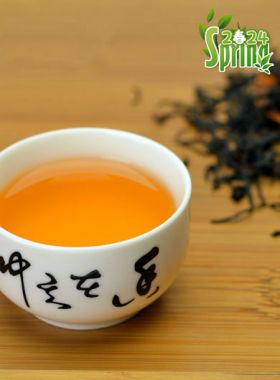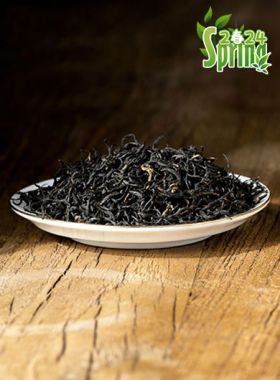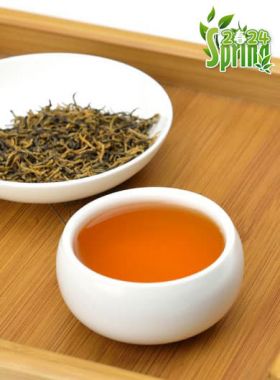-
Fast ShippingFree shipping for orders above $40
to most countries. -
Secure PaymentPay with Paypal, Credit Card …
-
Carefully SelectedFrequently Visit Tea Gardens.
Taste Repetitiously -
15 Days RefundNo Questions Asked
Refund Policy
EU Standard Lapsang Souchong (Zheng Shan Xiao Zhong) Black Tea
Natural sweet and mellow taste, EU standard
Natural sweet and mellow taste, EU standard
| Origin: |
Guangze County, Nanping City, Fujian Province, China |
|---|---|
|
Harvest Date: |
April 18, 2022 |
| Picking Standards: |
One bud with two leaves |
| Dry Leaf: |
Tight and thin strips, glossy and dark in color |
| Aroma: |
Sweet potato aroma |
| Liquor: |
Bright and clear orange |
| Taste: |
Sweet, soft and smooth, the taste is pure and the sweetness is natural |
| Tea Bush: |
Cai Cha |
| Tea Garden: |
Guangze Ecological Tea Garden (about 650 meters) |
| Caffeine: |
Less than 40% of a cup of coffee |
| Storage: |
Store in airtight, opaque packaging; in cool, dry place |
| Shelf Life: |
36 Months |
Angel's Comment:
Rich in sweet potato and floral scents, and the product meets the EU testing standards.
Certification:
 |
| Eurofins Certification (No. AR-22-SU-038367-01-EN) |
Following the wild Lapsang Souchong and organic Lapsang Souchong, TeaVivre has found a EU-standard Lapsang Souchong for you. It's not smokey, nor does it have the caramel-like sweetness of the wild Lapsang Souchong. It has very pure and clean taste – the mellow taste of black tea, the natural sweetness and the floral aroma, which is very comfortable to drink. The nectar aroma lingers in the tea cup for a long time. Besides, this tea has pass the EU testing, with high cost-effective, which is worth a trying!
 |
Cup Method |
 |
Chinese Gongfu Method |
 |
Teacup: 12oz / 355ml |  |
Gaiwan: 3.8oz / 110ml |
 |
194℉ / 90℃ |  |
194℉ / 90℃ |
 |
2.5 Teaspoons / 3g Tea |  |
5g Tea |
 |
Brewing time: 5 - 8 mins |  |
7 steeps: rinse, 10s, 10s, 15s, 20s, 30s, 40s, 60s |
| Rinse time is around 5 seconds |
When it comes to black tea, we may believe that China is the world's birthplace, and that black tea originated in the depths of Wuyi Mountain Nature Reserve. While Guangze County, located in the heart of the Wuyi Mountain Nature Reserve, is the world's original home of black tea. Guangze has adopted the idea of "ecological priority, green development" in recent years, and the tea industry was chosen as one of the key industries. Guangze has become a natural asset for ecological tea planting due to its excellent natural circumstances and superb climate. It also configure ecosystem, and use modern technologies such as digitalization and biological control to form an ecological tea garden. At present, the ecological tea garden in Guangze County covers an area of more than 27,000 mu.
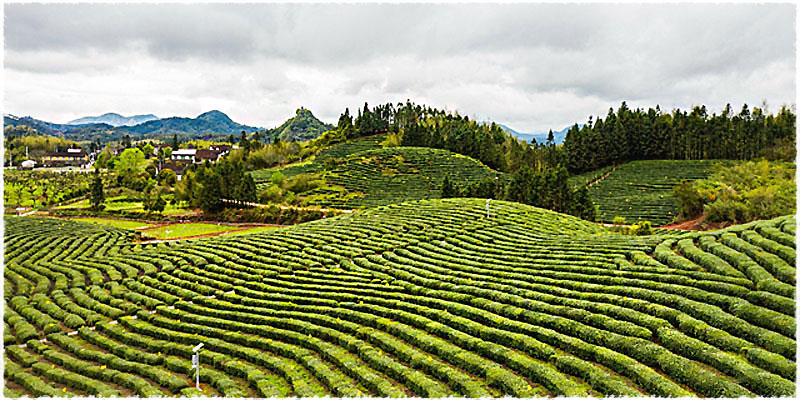
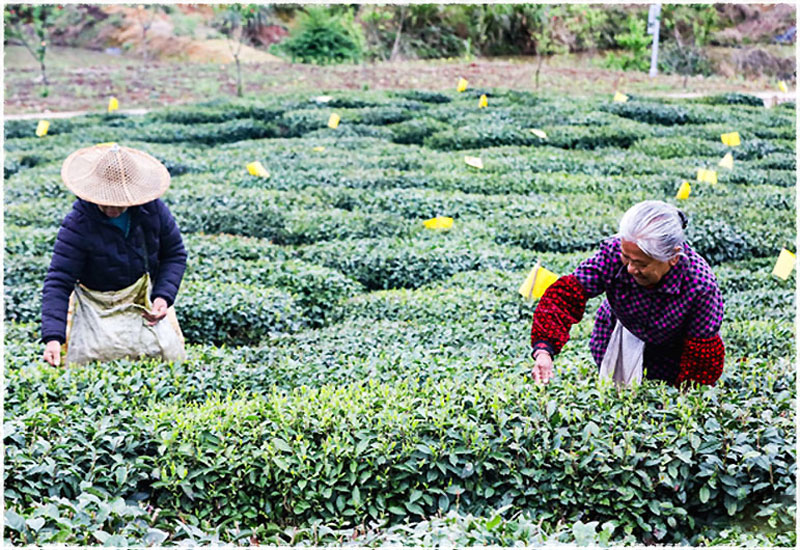
Guangze County, Guangze County belongs to Nanping City, Fujian Province. Located in the northwest of Fujian Province, and the northern section of the Wuyi Mountains, there are more than 570 peaks above 1,000 meters in the region, with rich product resources and scenic spots. The loveliest aspect of Guangzhuang County, however, should go to the black tea gardens all over the mountains. Tea and its scent gave a lot of life to this little town, as well as making Guangze County's black tea business and culture one of the world's, popular all over the world.
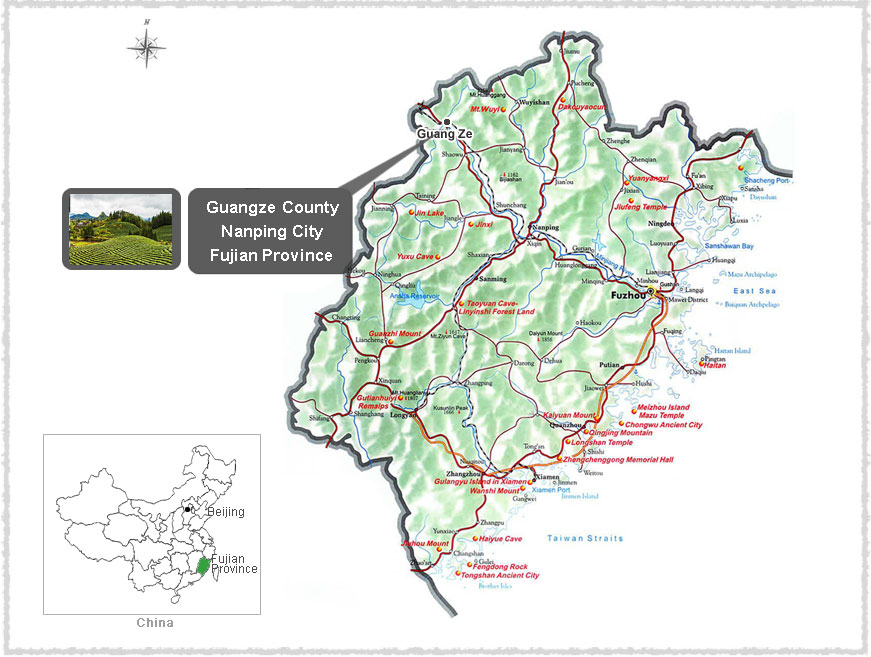
Wild Caicha is the oldest cultivar of Wuyi tea, and is also the representative species of medium- and small-leaf cultivars. It is a kind of short, small plant with thin branches, and reproduces sexually. Wild Caicha can be seen in the Tongmu and Da Anyuan state reserves; the plant is usually grown by seed propagation with natural hybridization among other tea trees, resulting in the mixed population diversity and different morphological characteristics between individual plants. Dahongpao, Baijiguan, Tieluohan, Shijingui, and Bantian’e are all selected from the rare Caicha, and as a result, this plant is regarded as an ancestor of many other tea varieties.
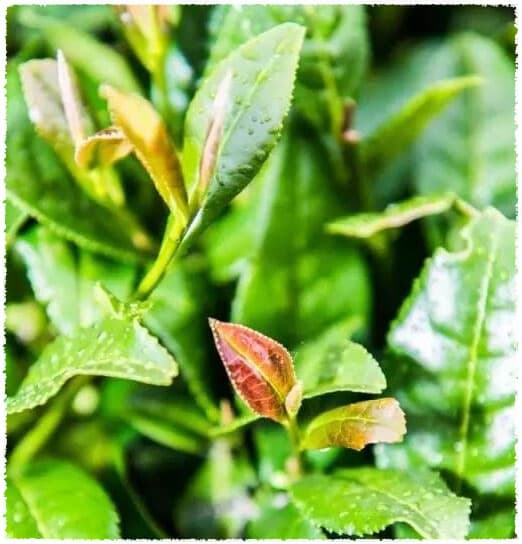
Lapsang Souchong, also called Zheng Shan Xiao Zhong, is the earliest black tea in the world, produced in 1568 in Tongmu Village on Wuyi Mountain, in Fujian. In 1604 it was spread to Europe and later from there to North America, and soon found its way into an important tradition: taking afternoon tea. However, due to frequent wars the numbers of production gradually decreased, and then almost ceased entirely by 1949. It was not recovered and redeveloped until the 1950s, and with the highest annual output ever.
-
5 stars9
-
4 stars3
-
3 stars1
-
2 stars2
-
1 star0





